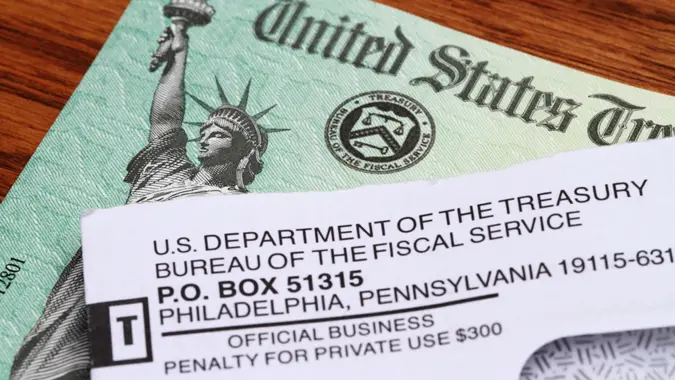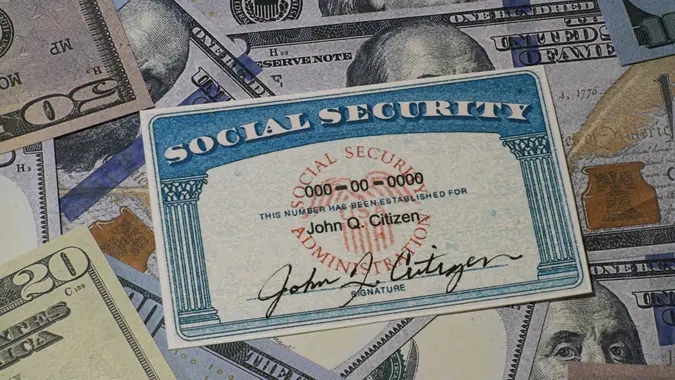A New Social Security Change Means You Could Owe Money

Commitment to Our Readers
GOBankingRates' editorial team is committed to bringing you unbiased reviews and information. We use data-driven methodologies to evaluate financial products and services - our reviews and ratings are not influenced by advertisers. You can read more about our editorial guidelines and our products and services review methodology.

20 Years
Helping You Live Richer

Reviewed
by Experts

Trusted by
Millions of Readers
Major changes are happening right now at the Social Security Administration (SSA). For some retirees and beneficiaries, these changes could come with an unexpected price tag.
A recent policy update means certain beneficiaries who were overpaid may now find themselves owing money back to the government. In March, the SSA announced it would reinstate the overpayment recovery rate and withhold 100% of a person’s monthly benefit to recover overpayments. After facing criticism, the agency stated in an emergency message that it adjusted the default withholding rate to 50% for some recipients.
These updates are part of a broader effort to overhaul how the SSA handles overpayments, but many Americans are left wondering what it means for them. Here’s what you need to know about the new rules, who’s most affected and how to prepare.
What Is the Social Security Overpayment Rule Change?
Effective Apr. 25, 2025, overpayment notices will include a new default withholding rate of 50% of a person’s monthly Social Security (Title II) benefit, down from the previous 100%. This applies to those receiving retirement, survivors and disability insurance benefits.
This means that if the SSA determines an individual has been overpaid, it will send a notice requesting a full and immediate refund. If the individual does not respond within approximately 90 days, the SSA will begin withholding 50% of their monthly benefits until the overpayment is fully recovered.
The new rule only applies to Title II benefits. The withholding rate for Supplemental Security Income (SSI) benefits is still 10%.
Who Is Most Likely To Be Impacted by Overpayments?
Any beneficiary may owe the Social Security Administration money if their monthly benefit checks are more than what they’re owed. This can happen for a number of reasons, such as if a beneficiary doesn’t report a change in their circumstances to the SSA, if the agency doesn’t process information quickly or has errors in its data, CNBC reported.
Richard Fiesta, executive director of the Alliance for Retired Americans, explained to CNBC that in most cases, it wasn’t the beneficiary’s fault that they were overpaid.
What You Can Do If You Receive an Overpayment Notice
Beneficiaries have the right to request a lower withholding rate, a reconsideration or a waiver of the overpayment recovery within 90 days of receiving the overpayment notice. If no action is taken, the 50% withholding will commence after this period if there’s no fraud or similar fault until the agency recovers the overpayment.
However, there is no guarantee that payment negotiation will be successful, and the outcomes vary, Kate Lang, director of federal income security at Justice in Aging, explained to CNBC. Beneficiaries can also expect long wait times to make an appointment to visit a Social Security Administration office.
More From GOBankingRates
 Written by
Written by  Edited by
Edited by 
























